So you’ve been bitten by the bug, those cute little finches that you have in a cage in the house suddenly seem nowhere enough. There are so many species and you love the idea of seeing them flying around naturally.
The obvious answer is that you can convert a corner of your garden and look at how to build an aviary for finches – but this isn’t something that should be done in haste. Preparation and research is key to a successful aviary and here are some tips to get you started.
Basic design
The first thing to look at is the amount of space you have available. While it is tempting to fill this entirely with the aviary, space is needed for more than just a flight for the birds.
For starters, it is crucial that you have some form of door system in place so that you don’t simply open your aviary to the world. I jokingly call it an airlock system but whatever you call it, if you want to keep your birds, it is crucial.
You need a small porch area in which you can stand, close the outer door and then open the inner door. If any birds fly into this porch area (and they will!) you can shuffle them back into the flight without risk of them flying away.
My aviary design
My first finch aviary design was a simple rectangle. It was 9 foot by 12 foot and was both fantastic and a nightmare! It was impossible to catch birds or know what was going on all the time. After a couple of years, we partitioned it into two making one section 5 x 9 feet and the other 7 x 9 feet. A door joined the two sections so escaping was sometimes an issue between the two internal sections. A net curtain acted as a visual barrier to help prevent this.
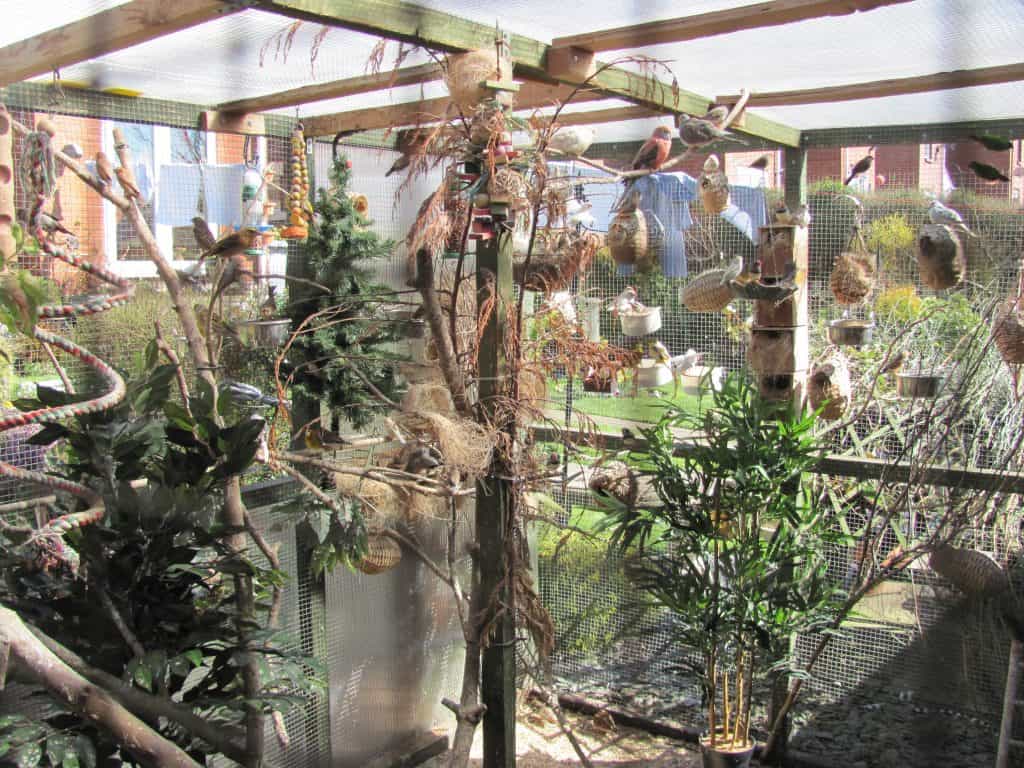
I had an extension added to my flight in April 2017 and went with a 10 foot long section that is split into three roughly three foot wide slender flights. I’ve found these were brilliant for keeping 2-3 species in and had good success with breeding the likes of the Blue cap Waxbills.
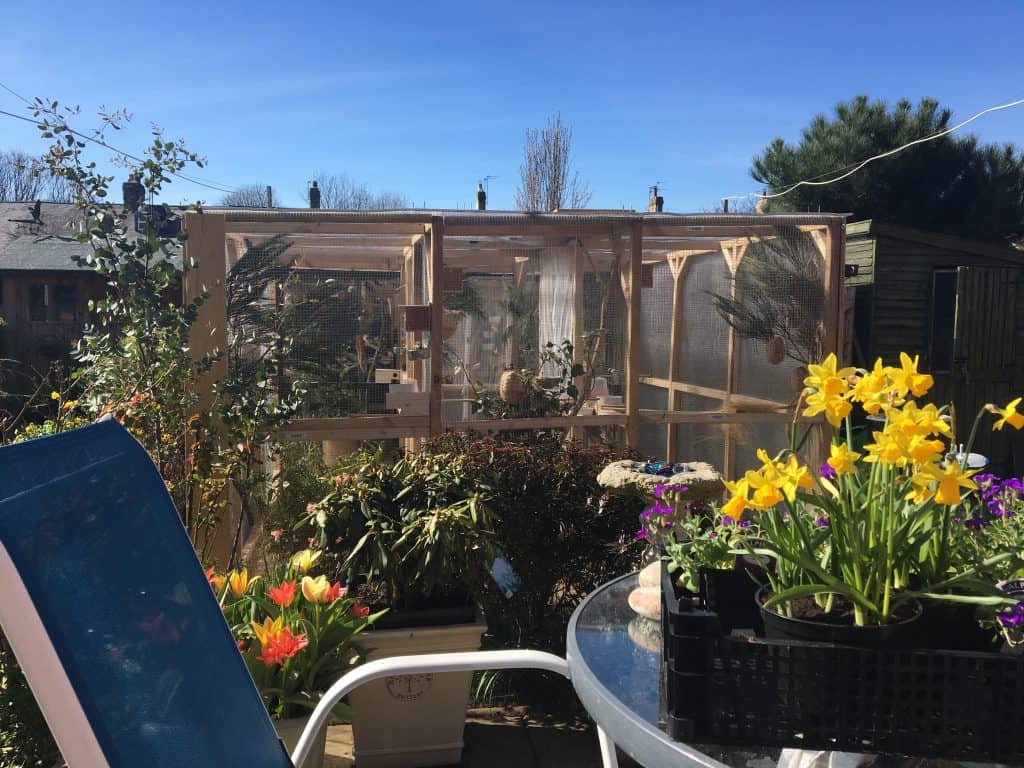
In November 2020, we moved house and that meant starting from scratch. From all I’d learned with my wooden aviaries, I decided I wanted to go with an aluminium frame style this time. Sam at DTV Plastics was the person who made my (very) rough design into a workable aviary.
I still really liked my slender flights and decided to have a layout of five flights that are 6 feet long and high by 3 feet wide.
For safety, I have a long corridor along the bottom of the flights, where each door opens. This means if birds get out, they are stuck in the corridor and I can get them back in. The doors also open wide and block the corridor into sections. There’s the main door at the far end which is the only outdoor access point.
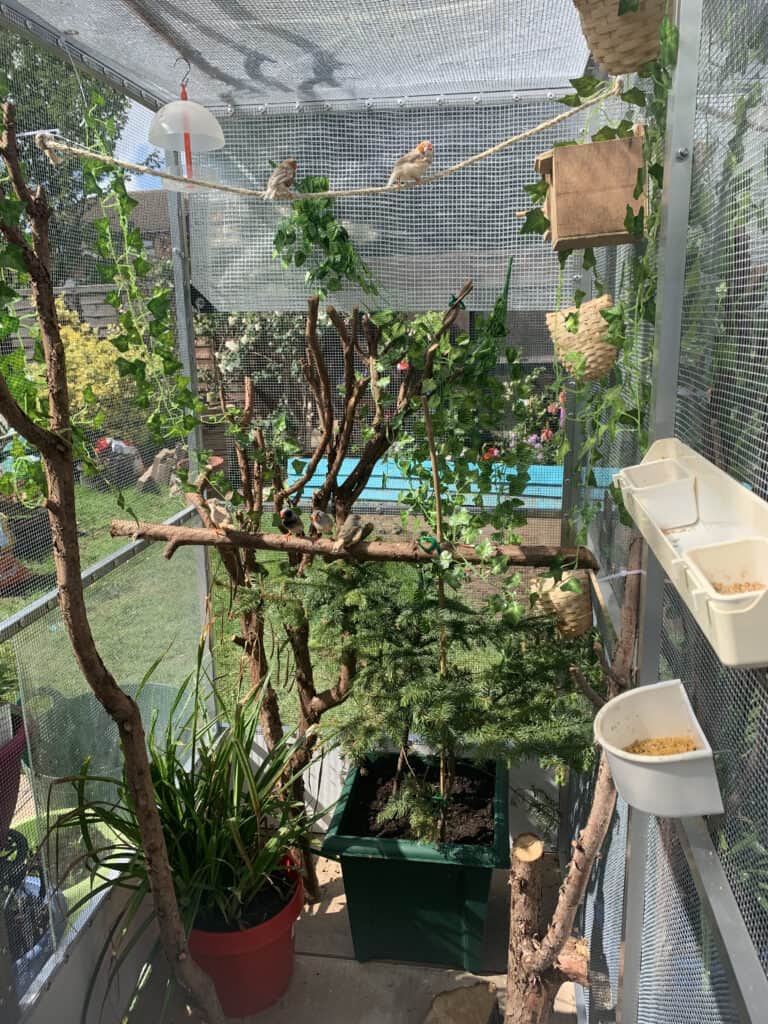
Other design elements
Wire mesh
The other important consideration is the mesh that you use. If you are planning to have finches, then you need the smallest mesh possible. We used ½ inch square mesh on ours and I had the very small Gold Breast Waxbills in there. The new flight has even finer mesh on and this is difficult for the cats to grip (although they still hang there for a bit)
Strong mesh is also important and isn’t something that you should look for a bargain version – it is literally your bird’s life at stake. Mesh that is weak or can be pulled out of shape can allow rats to get in, cats to claw through and hawks to pull apart and grab birds.
Flooring
Flooring is a matter that everyone has their own opinions on. We used paving slabs and I find this is great for draining water away. I often add a layer of Easibed as this absorbs water, helps with making the place a little warmer and smells lovely.
Other people swear by concrete bases but be sure to make some drainage holes or when your birds bathe, the water won’t drain away. Many people put a layer of mesh until the paving slabs to help prevent rats tunnelling up and into the aviary – the ultimate fear of any bird owner.
Decorating the aviary
When you are making an aviary for finches, toys aren’t as much of a priority as with parrot species but perches, feeding stations and water are crucial. Perches can be natural or manmade with a variety of widths and styles being of primary importance. If you are going to collect branches from gardens or public places, be certain there are no chemicals on them and avoid those found along the side of the road.
Trees and plants
There are lots of places that advise about what plants and trees are safe for finches and which ones aren’t. A particularly comprehensive list can be found at Lady Gouldian Finch. Trees such as ash, oak, pine, willow and maple are relatively common trees that branches are often used in aviaries.
Everyone has their own opinion about false plants. Personally, I love them. My birds demolish real plants but the fake ones provide a natural setting, allow them to build nests naturally if they want and are easy to take out and clean.
I have several Christmas trees in my flight and they are a warren of little nests as well as roosting spots. I also have fake bamboo and other smaller plants with nest boxes arranged around them to provide the illusion of natural coverage for the birds.
Feeding stations
Feeding dishes come in an equally large range of styles and sizes and the only thing that matters is there is plenty of them. By providing a number of feeding stations, birds travel around them all, there is less chance of arguments and you can monitor if birds are eating certain food by putting it out in a certain feeder.
For water, I have both bath water in the form of shallow bowls on the floor as well as water dispensers that are on shelves up higher. This means they have fresh water even when the bath water has become a little messy.
Conclusion
To me, having an aviary is trial and error. I had my original one for almost seven years and have learned a fantastic amount – when it came to making the second one, I went with a different design from the original.
But the fundamentals are all the same – safe, strong and plenty of natural features for the birds to enjoy. After that, you can fine-tune as you go and your birds will also tell you what they like and don’t like. All you need to do is watch them!
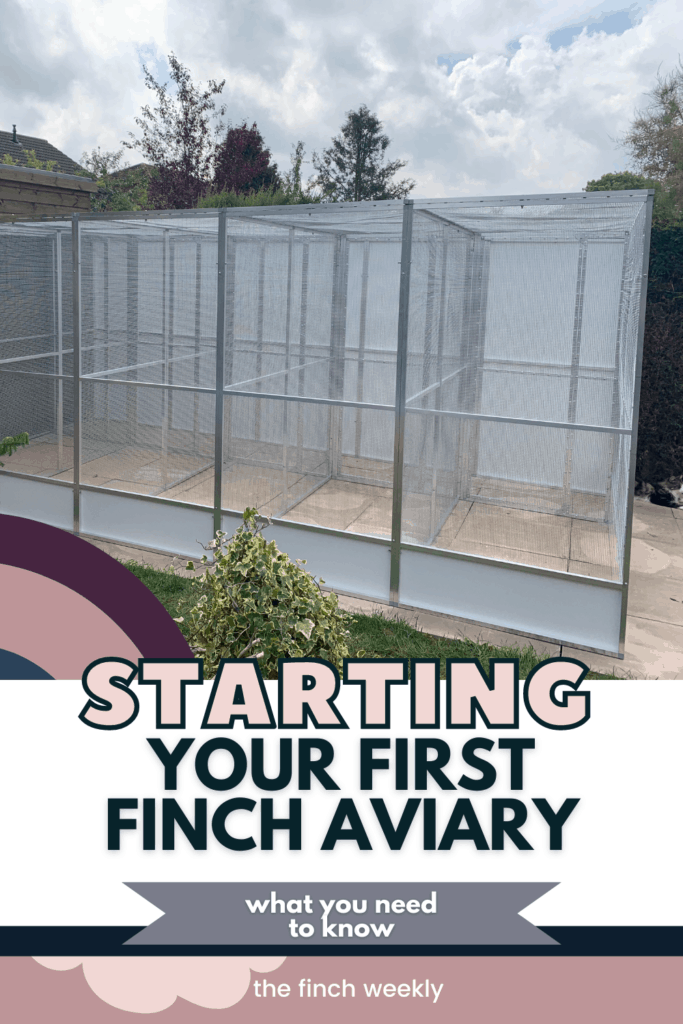
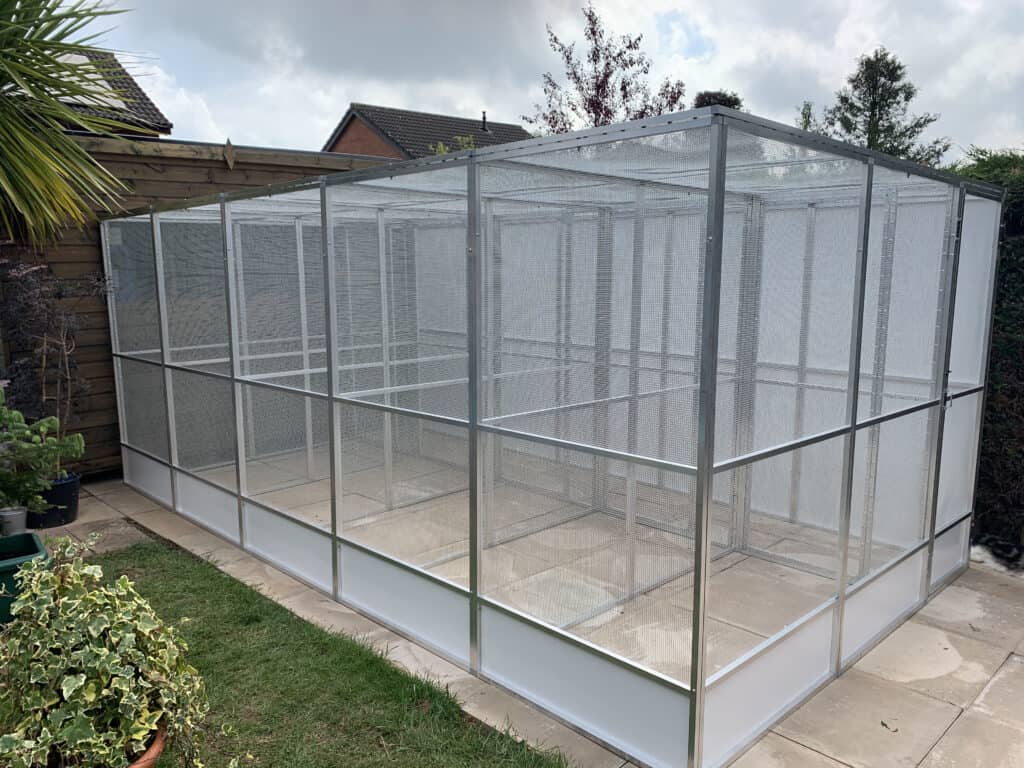
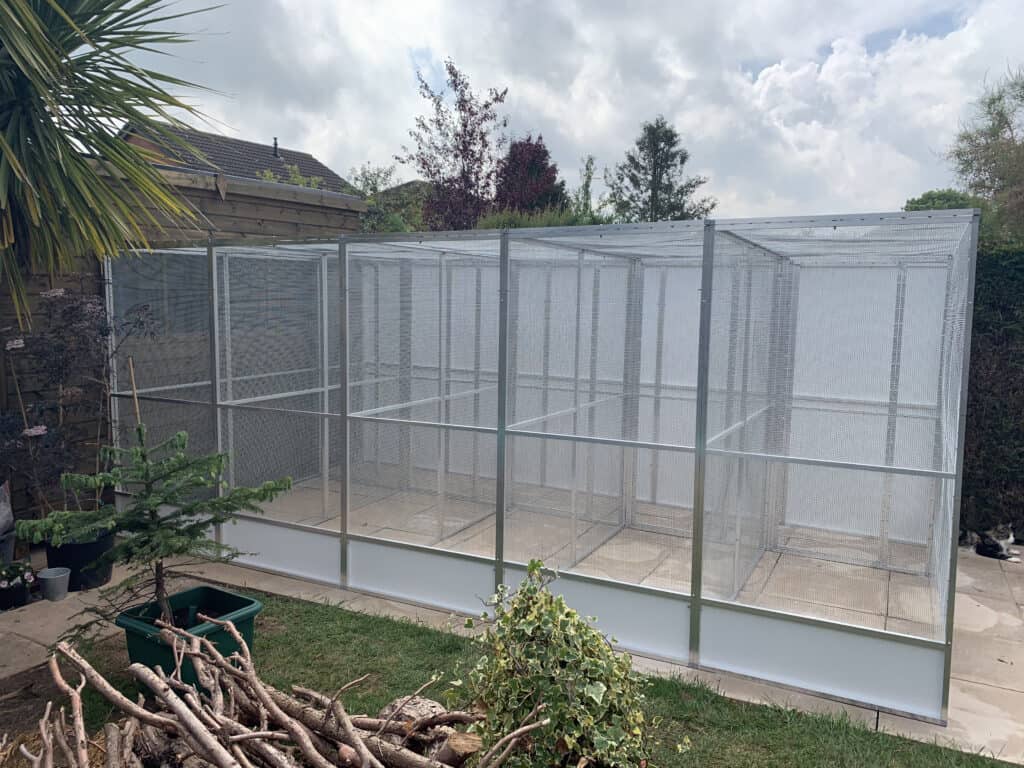
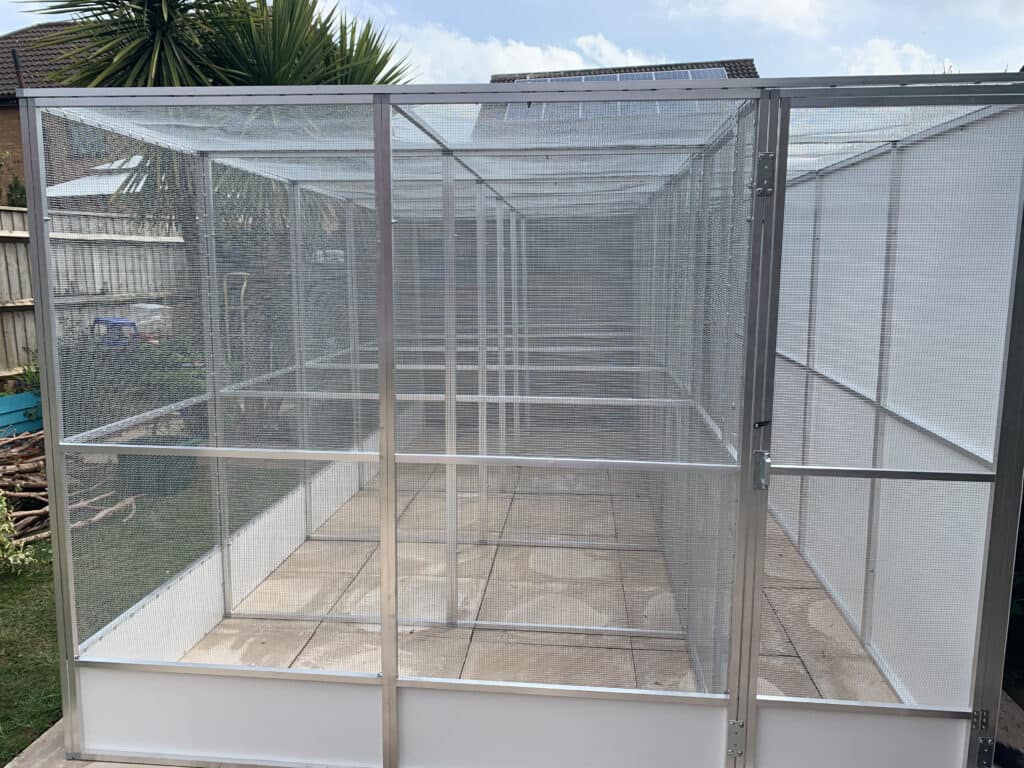
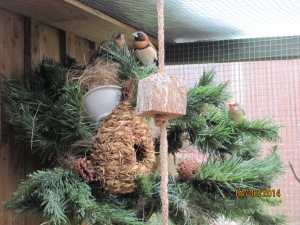
Hello Angela
After 30 odd years of not having an aviary of finches to care for due to work and travel, I have at 69 years decided to take up this fascinating hobby/responsibility again. I used to keep Aussie finches. What a variety! Breeding them is a very satisfying achievement. My small yard allows an aviary currently being built {3m long x1.5m wide x 2m high – flight 2.4m long}. North east aspect.
I look forward to getting on with this ideal interest along with my beach fishing and home brewing.
Hope to hear from you
Regards Ian
That’s so cool Ian, great to see you coming back to the hobby. And it is as addictive as ever! You’ll have so much fun keeping Aussies again.
All the best, Angela
How do you heat your aviary in the winter?
Designs are good. I am also trying to put aviary in my terrace. Go some ideas here. Thanks for share.
Where did you get your aluminum frame?